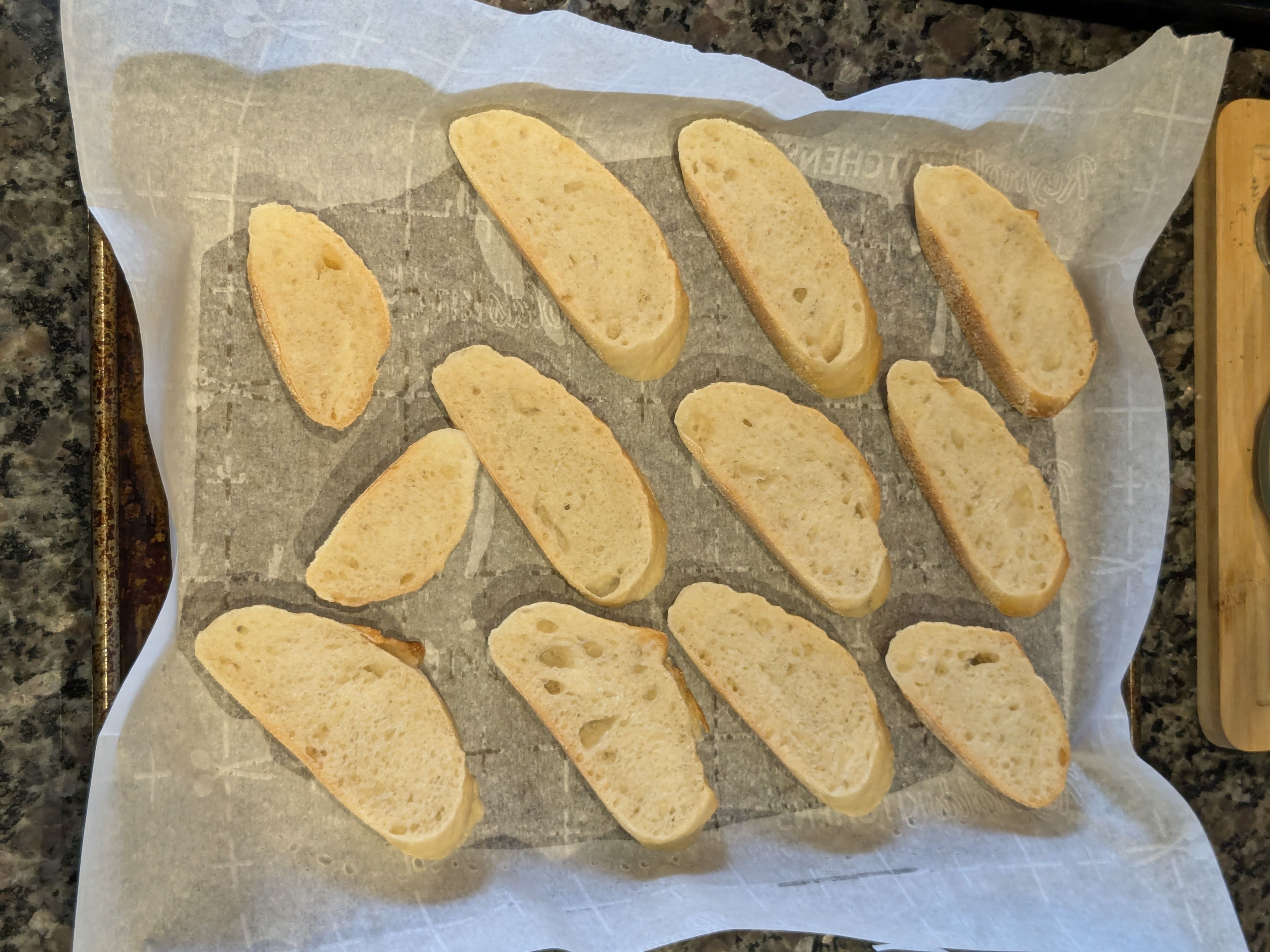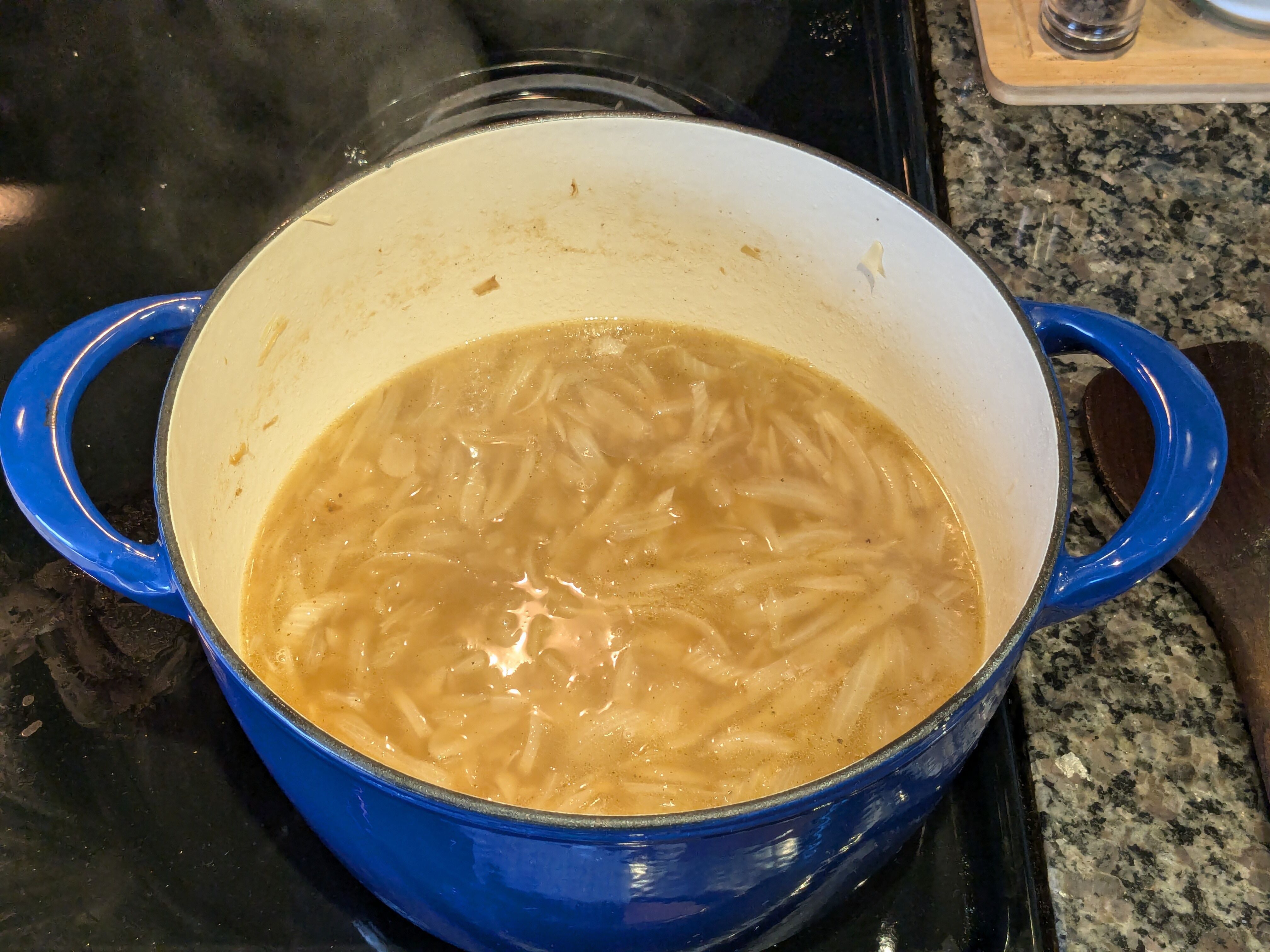
I felt like our exploration of French cooking wouldn't be complete without a departure from the world of stews. This week's dish is arguably the most famous yet: French onion soup.
The earliest versions of French onion soup in its "modern" form appeared in the mid-1700s as royalty food adapted from peasants.1 As you'll see from the process below, however, the base for this soup is so straightforward, this author would be shocked if its origins weren't much, much older. Onions are perhaps one of humanity's most widely consumed vegetables. From the queen herself:

Although Julia herself has a world-famous recipe for French onion soup, I wanted to find a different recipe, if only for variety.


This week's recipe comes from Jacques Pépin's "Essential Pepin" -- Onion Soup Lyonnaise-Style.2 After serving as the personal chef for multiple French presidents in the 1950s, Pépin moved to the United States where he became a widely-known food educator and contemporary of Julia Child.

The recipe begins, predictably, with a whole lotta' onion, sliced. We then caramelize the onions,3 a process which Jacques says will take approximately "15 minutes." Perhaps I was doing something wrong, but I found this to be a wildly optimistic estimate.



In the meantime, I lightly toasted some slices of baguette to act as the croûton in the finished soup. Jacques calls for these to be baked dry, which was a bit of a surprise to me. I assumed they were done w/ a light bit of olive oil, but perhaps this way we avoid extra oil in the final soup.


(I deviated from Jacques' recipe here slightly, and deglazed with a white wine instead of finishing w/ a mixture of port, since that's what I had on hand.) Once the onions were ready, I added the broth, salt, and pepper. To my surprise, the basic soup itself is just these 5 ingredients (broth, salt, pepper, butter, and onions) and is shockingly flavorful.4 I also prepared the ramekins for the soup by alternating layers of the bread and shredded Gruyère cheese.
Jacques calls for a tureen,5 but in lieu I used a couple of roughly-single-portion ramekins. This left me with more soup than would fit, but I'll happily eat the leftovers.


After simmering for about 25 minutes, I tasted and seasoned the soup and added it to the ramekins. These were then topped with the remaining cheese and baked until golden brown. This process is called gratin (i.e. they were gratinéed) and refers to a dish topped with a browned crust.



For me, this took about 15 minutes. The result was a browned, cheesy, rustic dish.

We thoroughly enjoyed this dish. It feels very much like comfort food -- easy to make, and rich to eat. The slightly sharp Gruyère works well with the warm onion soup. I found that the bread absorbed a bit too much of the soup for my liking, though this was more a function of my lack of a tureen than anything else. Even Faith, who is not particularly fond of onions, thought it was the best of the three French dishes we've tried.
I think this soup is impressive in its simplicity. I would -- and this week will -- absolutely eat just the onion soup without the bread and cheese. Aside from using a better-suited serving dish, all the things I would change concern developing flavors further: caramelize the onions for longer, bake until the cheese is darker, toast the bread longer, so it retains more of its texture.
All in all, this was a delicious and fitting last entrée for our exploration of French cuisine. Next week: dessert!




All images in this post were taken by me. I borrowed "Essential Pepin" from the fantastic Indianapolis Public Library.
Footnotes
-
Page 13 ↩
-
Andy Hearnden (of Andy Cooks) has a good tip where you use water, a tablespoon at a time, to help prevent your onions from browning too much during the process. ↩
-
This simplicity is one of the reasons I suspect a soup like this is much, much older than the 18th century. ↩